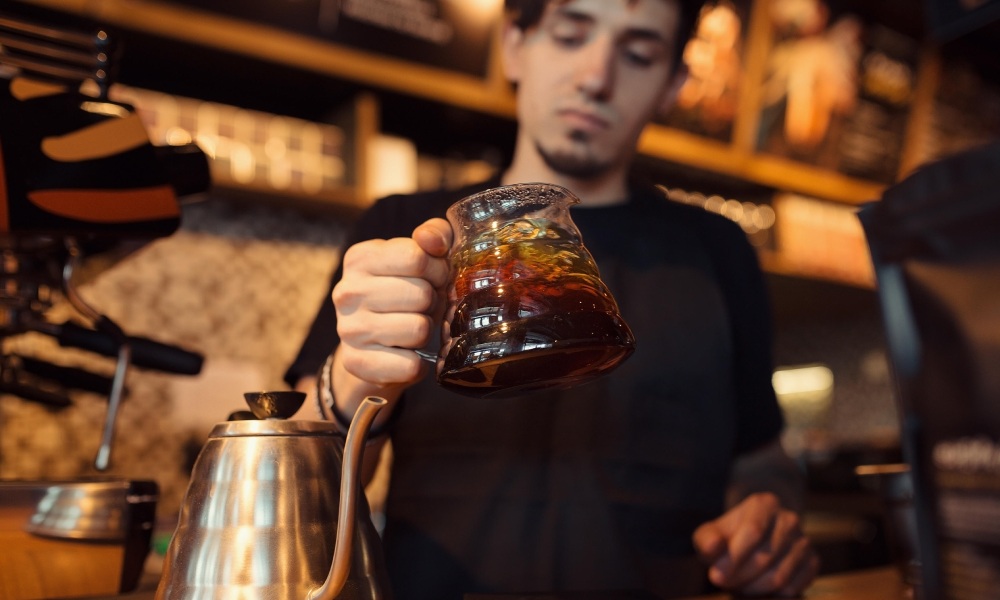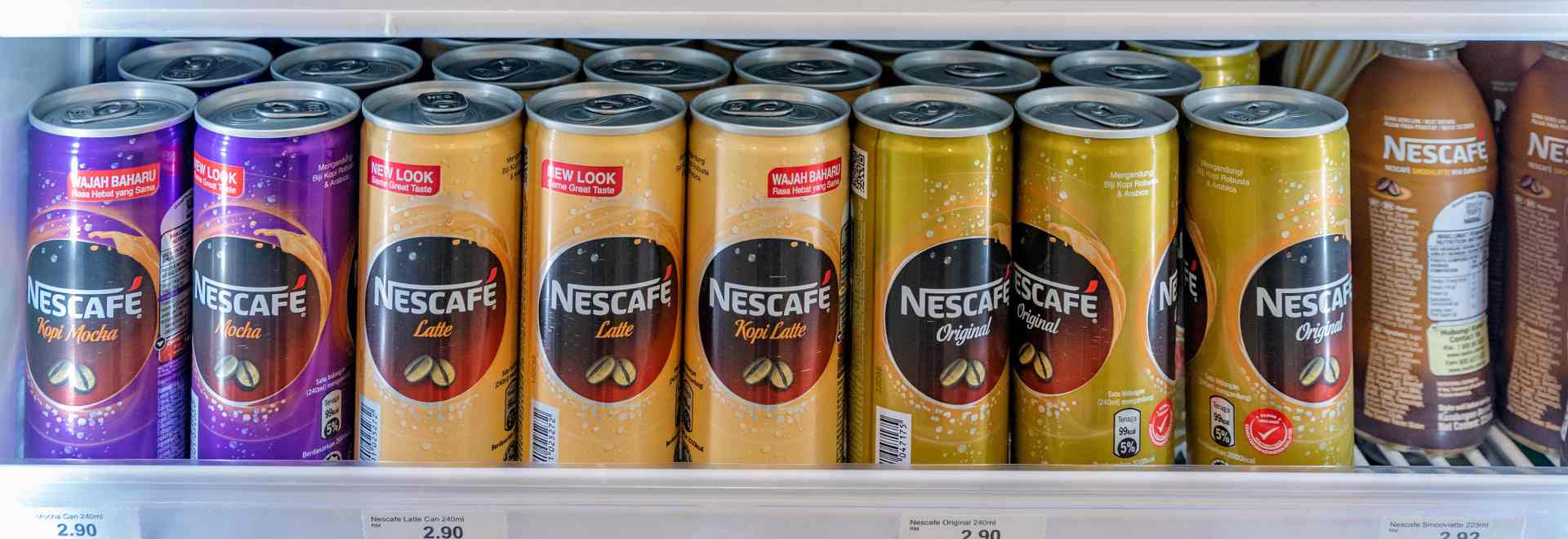How decaf and RTD drove all-day coffee consumption
Jenna Gottlieb speaks with William Sowerby about the increasing ubiquity of coffee in the marketplace, and explores how businesses can capitalise on its expanding audience.
A cup of coffee in the morning stirs millions of people into action every day, but why is it that the world’s second-favourite beverage is confined to the morning?
The Italians have an unwritten rule that cappuccino should never be ordered after 11AM – not only because of the stimulating effects of caffeine but also because the steamed milk can upset digestion throughout the day.
Traditions like these and other long-held beliefs that coffee should only be consumed in the morning create a small window. For a coffee shop, this effectively means that the day’s sales are cut in half.
Up until recently, this behaviour set a general pattern for coffee shops across the world: A large rush of coffees to be served throughout the 8AM to 10AM window, before another bump in sales from 11:30AM to 1PM.
However, this pattern is beginning to change.
The rise of decaf coffee, cold brew, RTD drinks, and coffee cocktails are changing this habit. These new coffee drinks can be consumed throughout the day, and are able to compete with other beverages such as tea, alcohol, and sodas.
For instance, the UK has a long cultural history that is deeply connected to its public houses. However, as coffee consumption continues to rise – with the help of these emerging niche segments – coffee shops are starting to take over much of the market share from pubs as a favoured social space. Indeed, as an increasing number of cafés appear on UK high streets, more pubs are closing down.
Younger consumers are also having a large impact. Research suggests that people under the age of 40 have contributed to the rise of nitro and cold brew coffees – with one in five people in this age range drinking from this category every week.
As coffee expands into the further reaches of daily consumers’ lives, coffee shops are presented with a huge opportunity to expand their menus and increase their sales window.

Coffee for any situation
One of the major factors is the rising quality of decaf and a growing acceptance of it in the specialty coffee community.
“Decaf drinkers have had a bit of a tough time,” says William Sowerby, communications & content lead at Pact Coffee. “Decaf has largely been about giving a false lease of life to stale beans through the decaffeination process for a while now – but hopefully that’s changing. We treat decaf just like any other coffee on the menu, we roast it fresh and deliver it a few days later.”
A growing number of cafés are putting high-quality decaf on their menus, and interest is growing. According to a recent report by Mintel, one in five coffee drinkers now regularly opt for decaf.
Meanwhile, RTD cans offer an excellent solution for younger generations who are increasingly prioritising convenience. Alongside a cold coffee segment which is experiencing exponential growth, consumers are now fully catered for during the summer months.
“Cold canned coffee has been a bit of a fob-off too – they were more sugary milkshakes with a shot or two of coffee rather than proper coffee,” says William. “We released one of the first speciality ready-to-drink cans on the UK market and added no sugar, artificial flavours or sweeteners. With great coffee, you’d think it’s a no-brainer.”
This is an example of the specialty coffee sector finding a new way to elevate existing segments and bringing new products to the market. Another example of this would be the growth in high-end coffee cocktails. There is even a global coffee cocktail competition which pushes this segment forward and brings coffee to a wider audience.
As demand guides coffee into new markets, many cafés are extending their opening hours and capitalising on the increasing appetite for these new drinks.

How businesses can serve coffee throughout the day
The increased quality of decaf and RTD cans is helping to boost overall coffee consumption.
Market analysis shows this will only continue as decaf is one of the strongest-performing segments in the coffee industry. The global decaf market is expected to experience increased growth of 7-8% each year for the next five years.
As coffee increasingly establishes itself as an all-day drink with these new products, there is more of an onus on businesses to operate around the clock. But the labour associated with managing an all-day establishment can be expensive, and café workers who are accustomed to a regular daytime shift could be resistant to evening hours.
When working with a range of different products to appeal to people across a wider window, it can be helpful to have more flexibility, and superautomatic coffee machines can help with this.
These machines are already very common in places such as service stations and airports. The transition of coffee as an all-day drink could make superautomatic machines an attractive solution for other establishments hoping to serve coffee at less conventional hours of the day.
For example, the Carimali SilverAce has a user-friendly interface that customers can easily navigate. Plus, its four hoppers means that a decaf option can easily be stocked alongside one or more standard espresso offerings.
“Bean-to-cup machines are a great way of brewing delicious coffee,” says William. “We’ve actually roasted some of our classic espresso so it’s optimised for these machines.”
This shows how specialty coffee is being served is changing to cater to shifting demands. Coffee is increasingly becoming a drink for all times and seasons. As such, businesses now have an opportunity to reach a wider audience and increase their sales – and they would be wise not to miss out.








